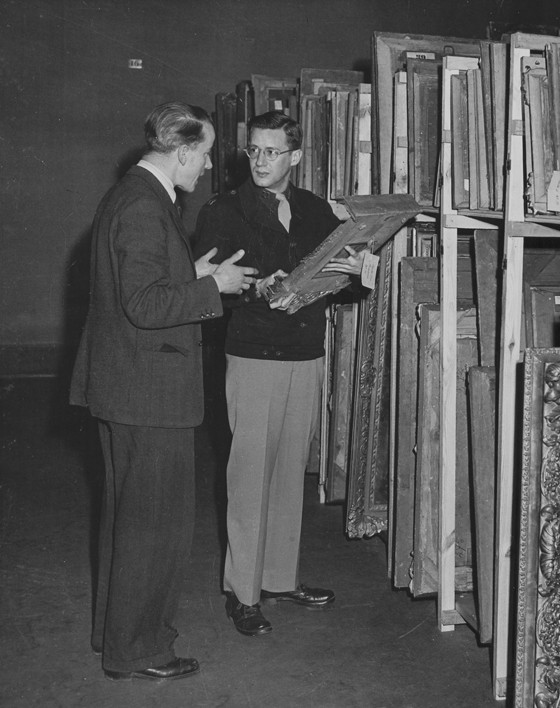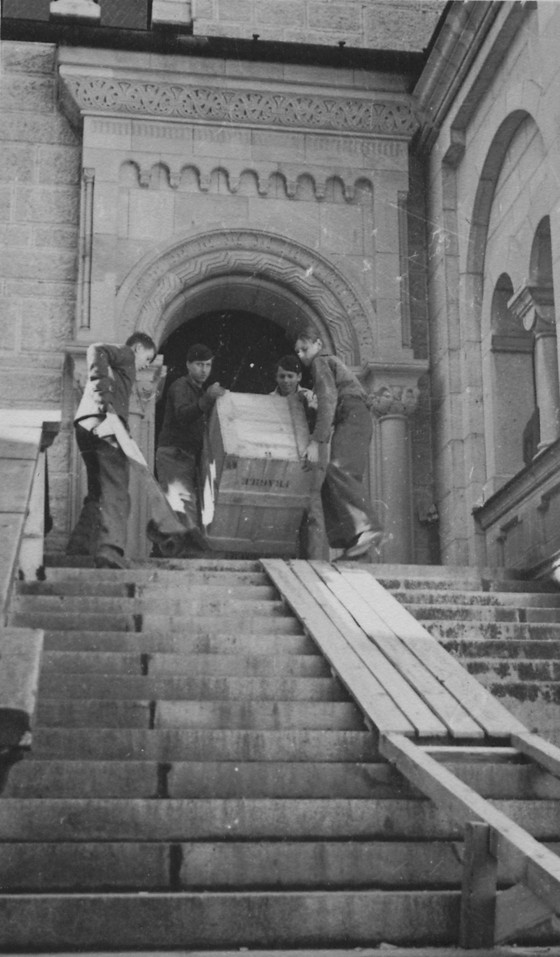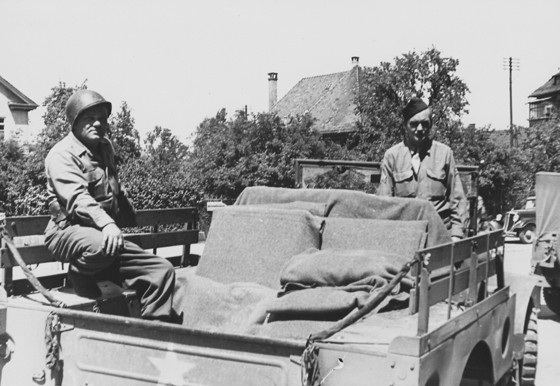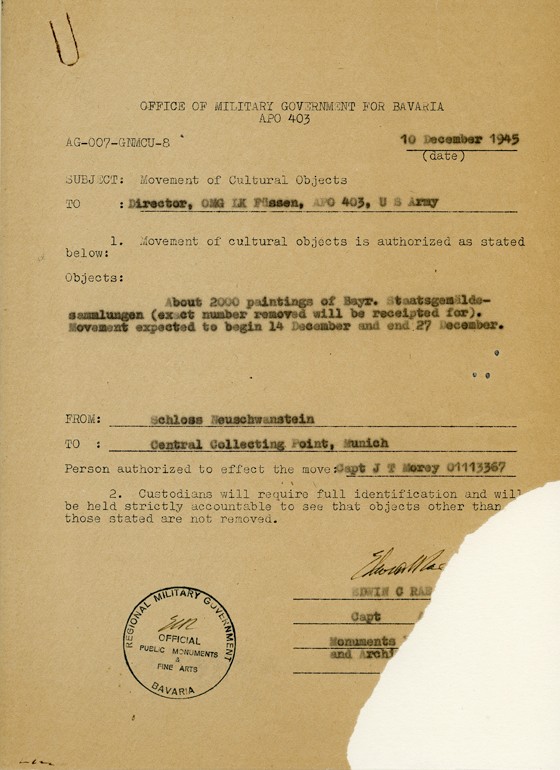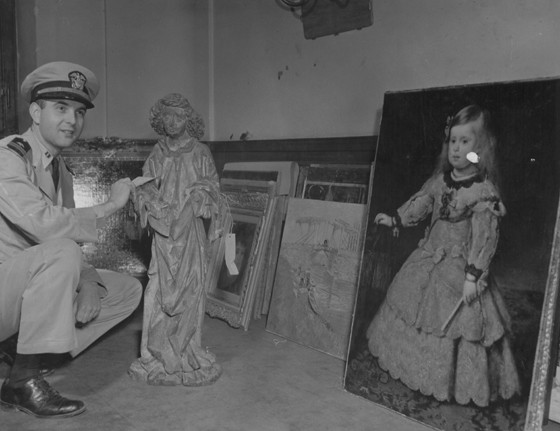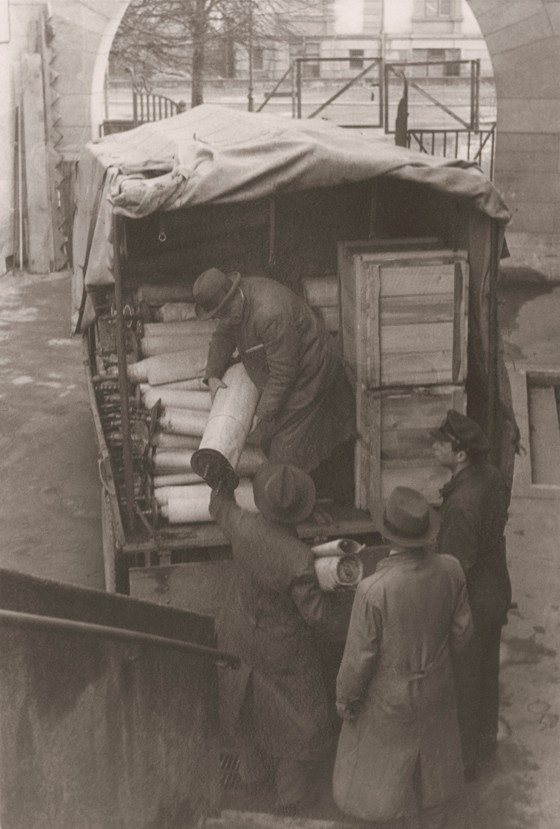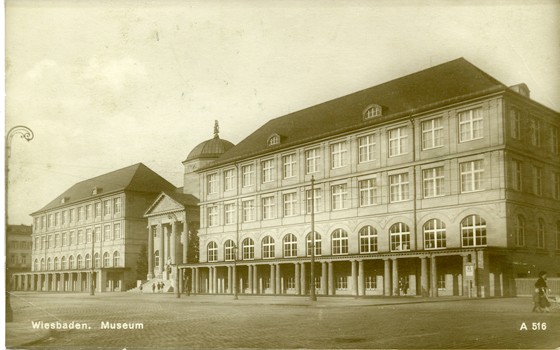The Monuments Men
and the National Gallery of Art
V. Sanctuaries for Art
With the Nazi depots of loot and treasures physically secured, the principal concern of the monuments men turned to the formidable task of evacuating the contents to safer locations. Many cultural objects were moved to central collecting points where they were cataloged and cared for under the watchful eyes of monuments officers. Despite limited staff and supplies, the collecting points soon became model repositories for the immense collections of art, books, documents, and Jewish religious objects that had been discovered.
Captain Walter Farmer (right) at the Munich Central Collecting Point. Walter Farmer Papers
In addition to looted art, monuments officers discovered German national treasures in Schloss Neuschwanstein and other Nazi hiding places. These items, which belonged to the German nation, were brought to central collecting points and given extraordinary care and protection. Here monuments officer Captain Walter Farmer and an adviser are shown in a special room for German-owned paintings.
Workers removing art from Schloss Neuschwanstein, November 1945. Charles Parkhurst Papers
Army truck moving looted paintings to the Wiesbaden Landesmuseum, 1945. Charles Parkhurst Papers
Despite the best efforts of the Roberts Commission, the officers were markedly hampered by limited materials and transportation. Nonetheless, the men were able to move thousands of works of art to places of safety.
Military Transport Authorization, December 1945. Edward Adams Papers
This memorandum authorized transport of 2,000 German paintings from Schloss Neuschwanstein to the Munich Central Collecting Point.
Lieutenant Craig Hugh Smyth at the Munich Central Collecting Point with looted art, 1945. Charles Parkhurst Papers
Lieutenant Smyth reported for duty as officer-in-charge of the Munich Central Collecting Point on
June 4, 1945, just two weeks before the first loads of art objects arrived. Within two months, more than 6,000 items had been received. Smyth had been a research assistant at the National Gallery of Art before joining the navy.
Jewish religious objects arriving at the Munich Central Collecting Point, 1945. Craig Hugh Smyth Papers
Landesmuseum, Wiesbaden. Charles Parkhurst Papers
The Wiesbaden Central Collecting Point was housed in the Landesmuseum. During the war the museum had been used as the headquarters for the general command of the German Luftwaffe.
Next > VI. Restitution and Closure
